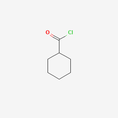Introduction
Silicone fluid for waterproofing is a high - performance material formulated from silicone polymers. These fluids are typically clear, odorless, and have a wide range of viscosities. They are designed to create a durable, water - repellent barrier on various surfaces. The unique molecular structure of silicone, with its silicon - oxygen backbone and organic side groups, gives the fluid excellent chemical and physical properties that make it ideal for waterproofing applications.
Advantages
Superior Water Repellency
Silicone fluid forms a tight, hydrophobic layer on the surface it is applied to. This layer effectively repels water, preventing it from penetrating the substrate. Whether it's rain, moisture in the air, or contact with liquids, the waterproofing silicone fluid ensures that the surface remains dry.
Weather Resistance
It can withstand a wide range of weather conditions, including extreme temperatures, UV radiation, and humidity. Unlike some traditional waterproofing materials that may degrade over time due to exposure to the elements, silicone fluid maintains its performance and integrity, providing long - term protection.
Flexibility
Silicone fluid has excellent flexibility, which allows it to adapt to the movement and expansion of the substrate. This is particularly important for surfaces that are subject to thermal cycling or structural movement, such as roofs and building facades. The fluid can stretch and contract without cracking or peeling, ensuring continuous waterproofing.
Chemical Resistance
It is resistant to many chemicals, including acids, alkalis, and solvents. This makes it suitable for use in industrial environments where the surface may come into contact with various corrosive substances. The chemical resistance of silicone fluid helps to protect the substrate from damage and extends its service life.
Easy Application
Silicone fluid can be easily applied using various methods, such as spraying, brushing, or dipping. It has good wetting properties, which means it can spread evenly over the surface, ensuring complete coverage. This ease of application reduces labor costs and time during the waterproofing process.
Applications
Building and Construction
Roofs: Silicone fluid is widely used for waterproofing flat and pitched roofs. It can be applied to various roofing materials, such as concrete, asphalt, and metal, to prevent water leakage and protect the underlying structure.
Walls: It can be used on exterior and interior walls to protect against moisture penetration, which can cause mold growth, paint peeling, and structural damage.
Basements: Silicone fluid helps to keep basements dry by creating a waterproof barrier on the walls and floors, preventing water seepage from the ground.
Automotive Industry
Windshields and Windows: Applying silicone fluid to automotive windshields and windows improves water repellency, enhancing visibility during rainy conditions. It also helps to prevent ice and snow from sticking to the glass.
Underbody Protection: Silicone fluid can be used to waterproof the underbody of vehicles, protecting it from corrosion caused by water, road salt, and other contaminants.
Textile Industry
Outdoor Clothing: Silicone fluid is used to treat outdoor clothing, such as jackets and tents, to make them waterproof and breathable. It allows moisture vapor to escape while keeping water out, providing comfort to the wearer.
Upholstery: It can be applied to upholstery fabrics to protect them from spills and stains, making them easier to clean and maintain.
FAQ
Q1: How long does the waterproofing effect of silicone fluid last?
A1: The durability of the waterproofing effect depends on several factors, such as the quality of the silicone fluid, the application method, and the environmental conditions. Generally, it can last for several years, but in harsh environments, re - application may be required after 3 - 5 years.
Q2: Can silicone fluid be applied to wet surfaces?
A2: It is recommended to apply silicone fluid to dry surfaces for the best results. Moisture on the surface can prevent the fluid from adhering properly and may affect the quality of the waterproofing layer.
Q3: Is silicone fluid safe for the environment?
A3: Most silicone fluids for waterproofing are environmentally friendly. They are non - toxic, non - flammable, and do not release harmful substances into the environment. However, it is always advisable to check the product specifications and follow the manufacturer's instructions.
Q4: Can I paint over the silicone - treated surface?
A4: In most cases, it is not recommended to paint directly over a silicone - treated surface. Silicone creates a smooth, non - porous layer that may prevent paint from adhering properly. If painting is necessary, a special primer designed for use on silicone - treated surfaces should be applied first.
Q5: How do I clean up spills of silicone fluid?
A5: For fresh spills, absorb the excess fluid with a clean cloth or paper towel. Then, clean the area with a mild detergent and water. If the spill has dried, a solvent suitable for silicone removal may be required, but make sure to test it on a small, inconspicuous area first to avoid damage to the surface.
Hot Tags: silicone fluid for waterproofing, China silicone fluid for waterproofing manufacturers, suppliers, factory, pharmaceutical chemical intermediates, high quality pharmaceutical intermediates, pharmaceutical intermediate lead time, pharmaceutical intermediate output, specialty pharmaceutical intermediates, api intermediates










